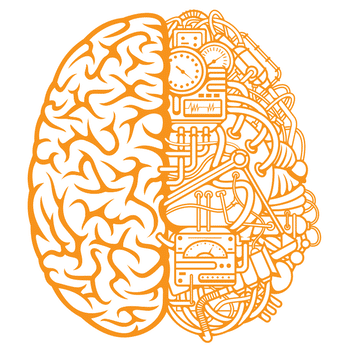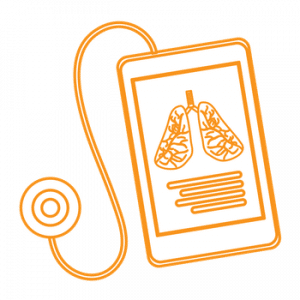Natural Language Processing in Healthcare: Is It Worth Implementing?
This is how clinical natural language processing can improve the quality of care, boost doctors’ efficiency, and improve the patient outcomes. Tech tips on NLP implementation included.

The adoption of EHR systems has already proven to beneficial for the patients. Up to 65% of physicians have stated that the new system has lead to improving inpatient care.
But what about the benefits for clinicians?
After all, current EHR systems offered by vendors are mainly designed to comply with the every increasing HIPAA Compliance Requirements Checklist that focuses more on patient data safety features, reporting requirements, and quality measures, rather than truly innovative functionality that may significantly improve the clinician outcomes and staff efficiency.
Most healthcare providers still lack access to coherent external data and find it hard to extract actionable insights from all the unstructured data available within the EHR/EMR systems.
Specifically, clinicians have previously reported the following common problems with data extraction:
- A lot of data has been coded/transformed for billing purposes.
- Data available in a free text format may not be available in easy-to-use formats.
- EHRs tend to offer multiple sources of data from a given indicator of interest, resulting in possible inconsistencies in the data.
- Data available in EHR may not be complete due to low fill rates within the institution.
- EHR systems may contain falsely/inaccurate data.
Introducing natural language processing to electronic medical records may be the layering stone of solving these issues and transitioning to more intelligent, intuitive, and streamlined reports medical professionals can use on a daily basis.
What is Natural Language Processing (NLP)?

Natural language processing (NLP) can be broadly described as utilizing computer algorithms to process and extract meaning from natural languages like speech or written text.
Medical natural language processing systems specifically can help to cope with the next set of common tasks:
- Locating, extracting, and summarizing key concepts or phrases from blocks of narrative texts (e.g. clinical notes or a patient’s account) for further analysis. Scott Evans, Director of Medical Informatics at Intermountain Healthcare, has noted that a Java-based NLP program has helped them to improve medical diagnosis procedures by identifying at-risk patients with heart failure with higher accuracy. The software analyzes data from 25+ different types of text documents stored within the EMR and notifies respective medical professionals that these types of patients are at the hospital and need additional attention.
- Converting data from machine-readable formats into a natural language (speech or written text).
- Optimize unstructured text data and map it to the respective fields to improve an electronic health record.
- Doing speech recognition tasks that will allow users to dictate notes that can be instantly turned into text with high accuracy.
It has been estimated that physicians spend 49% of their hours on paperwork and inputting/organizing data within the EHR system. Automating these routines can significantly improve the staff’s productivity, efficiency, and morale.
Rasu Shrestha, Chief Innovation Officer at UPMC, also noted that NLP apps can drastically reduce the time needed to uncover valuable insights from all the data at hand and make physicians’ work more “intelligent”. Specifically, an NLP-powered context engine can mine unstructured documents at high speed and deliver actionable suggestions around clinical decision support, sepsis management, stroke management and so on.
Implementing EHR natural language processing can also improve risk management for patients with chronic diseases. For most physicians it’s difficult to dig through the Hierarchical Condition Category (HCC) codes to determine what type of diabetes the patient has or whether they have a chronic obstructive lung disease, whereas an AI-powered system can skim through a dozen of unstructured documents within the seconds to determine the exact severity of the specified condition and how it may interfere with the suggested treatment.
The particular allure of NLP for healthcare is that these systems can “learn” over time and deliver better and better insights as more interactions occur. Data processing can be also improved over time by adjusting the statistical probabilities, which account for the likelihood that the delivered bit of data matches the user request. Based on the feedback, these probabilities can be tweaked further to improve the results even further.
Key NLP Use Cases in Healthcare
It is predicted that by 2024, natural language processing in healthcare will hit $4.3 billion. Part of the surged demand for this technology comes as a result of the data explosion in healthcare. The abundance of information now available to the clinicians is certainly beneficial for healthcare quality, yet extracting the truly relevant and most important bits have become rather challenging.
The innovative clinical NLP companies are now pushing the next tech trends towards to address the common problems and emerging challenges in health data management and patient care.
Improving the Quality and Integrity of Clinical Notes

As already noted clinical natural language processing can improve the processing of unstructured data, otherwise challenging to render. Think faxed PDF lab reports, free text EHR inputs, spoken accounts and so on.
Clinical notes today can grow to several feet high stack of folders, which are obviously hard to analyze, especially in case of an emergency. As a result, clinicians often have a fragmented view of the patient’s history and cannot deliver proper care.
Implementing an NLP-backed system can solve the next challenges specifically, apart from reducing the time and effort required to retrieve and extract the valuable insights:
- Provide a complete, easy-to-review, summary of all the information available to the patient.
- Alert about the possible risks and chronic conditions the person has.
- Summarize the key phrases and cluster them into groups such as “heart failure risk” to support predictive modeling.
- Merge structured and unstructured data to present a detailed overview of the patient’s health over time and all previous medical interventions.
- Apply clinical best practice models to assess compliance with good practice.
Expedite Patient Identification for Clinical Trial Enrollment
Healthcare natural language processing can be used to enable automated case finding for the best candidates for clinical trials and medical research. Again, the system can analyze all sorts of information and take it into account when suggesting the ultimate candidate.
Additionally, the system can immediately notify the clinician if a certain patient is eligible for an ongoing trial, rather than have them informed post-discharge. This way the patient stays informed of all the possible healthcare options, which are crucial during the early stages of diseases.
The early results of this are rather promising, as the automated eligibility screening has resulted in a 450% increase in trial screening efficiency.
Forecast Complications In Complex Patients
NLP in tow with predictive analytics can be deployed to cater to improve the diagnosis process and identify high-risk patients immediately.
Having complete data at hand and fast is particularly crucial in the emergency department. For instance, a delayed diagnosis of Kawasaki diseases can lead to serious cardiac complications if omitted or mistreated early on. As the scientific results have proved, an NLP algorithm managed to identify KD at-risk patients with a sensitivity of 93.6% and specify of 77.5% compared to the notes manually reviewed by the clinicians.
A group of French researchers has developed another NLP-powered algorithm aimed at monitoring, detecting, and preventing hospital-acquired infections (HAI) among patients. Performing hospital-wide surveillance on this is a complex and time-consuming task. However, computer science enables parsing all the patient records, while NLP can help render unstructured data such as speech accounts that are used to detect early signs of a possible infection and notify the clinicians.
Another successful experiment was conducted to automate the identification and predict risk for hospitalized heart failure patients. Scientists analyzed free text reports from the previous 24-hours each day with the help of NLP to determine at-risk hospitalized patients and predict the patient’s risk of 30-day hospital readmission and 30-day mortality. The algorithm performed really well and increased the identification score’s sensitivity from 82.6% to 95.3% and its specificity from 82.7% to 97.5%, and the model’s positive predictive value is 97.45%.
The advantages of using NLP can be stretched to other areas of interest and different algorithms can be deployed to identify and predict the specified conditions among patients.
Natural Language Processing Technology in Healthcare
The current advance health informatics signifies that NLP algorithms will become more accurate in the following years and capable to perform more advanced functions. Our health IT experts keep a close eye on the news and trends and lined up the essential tech stack required to build an NLP-powered system.
First, you will need to choose the right big data framework to process and analyze everything you have at hand. The two most common options are Spark and Hadoop.
The natural language processing component itself can be assembled from a number of different algorithms designed to perform specific tasks and capable of working in tandem. Here’s how a simple algorithm can be assembled:
- You can browse the comprehensive Stanford NLP library, stashed with Java-based algorithms. Their part-of-speech (POS) tagger is particularly great. It is used to automatically match parts of speech to every word within your text. This tagger also classifies words in text based on lexical features and analyzes them in relation to other words next to them. This helps you to receive higher quality and more coherent output.
- For Python apps, it’s worth checking Spacy – an advanced syntactic pacer with top accuracy, offering support for 25+ languages.
- If you plan to process multiple NLP workflows, which assume the integration of several processing steps, you can use a designated framework like GATE or Apache UIMA that reduce repetitive tasks and help with standardization.
- For implementing speech recognition the two great programs are Julius and CMU Spinx – both are open-source.
- To improve your system’s efficiency over time, you can use the IRSTLM toolkit, designed for training and storing language models and/or kenlm – a tool for memory and time-efficient storage of language models.
Of course, this isn’t a comprehensive tech stack and the ultimate technology selection will largely depend on the desired functionality and designated set of tasks your system should be capable to perform.
If you would like to know more about the benefits of implementing NLP for your healthcare organization, don’t hesitate to get in touch with the Romexsoft team. We’d be delighted to consult you on the latest healthtech trends and how those could be implemented to meet your business goals.





